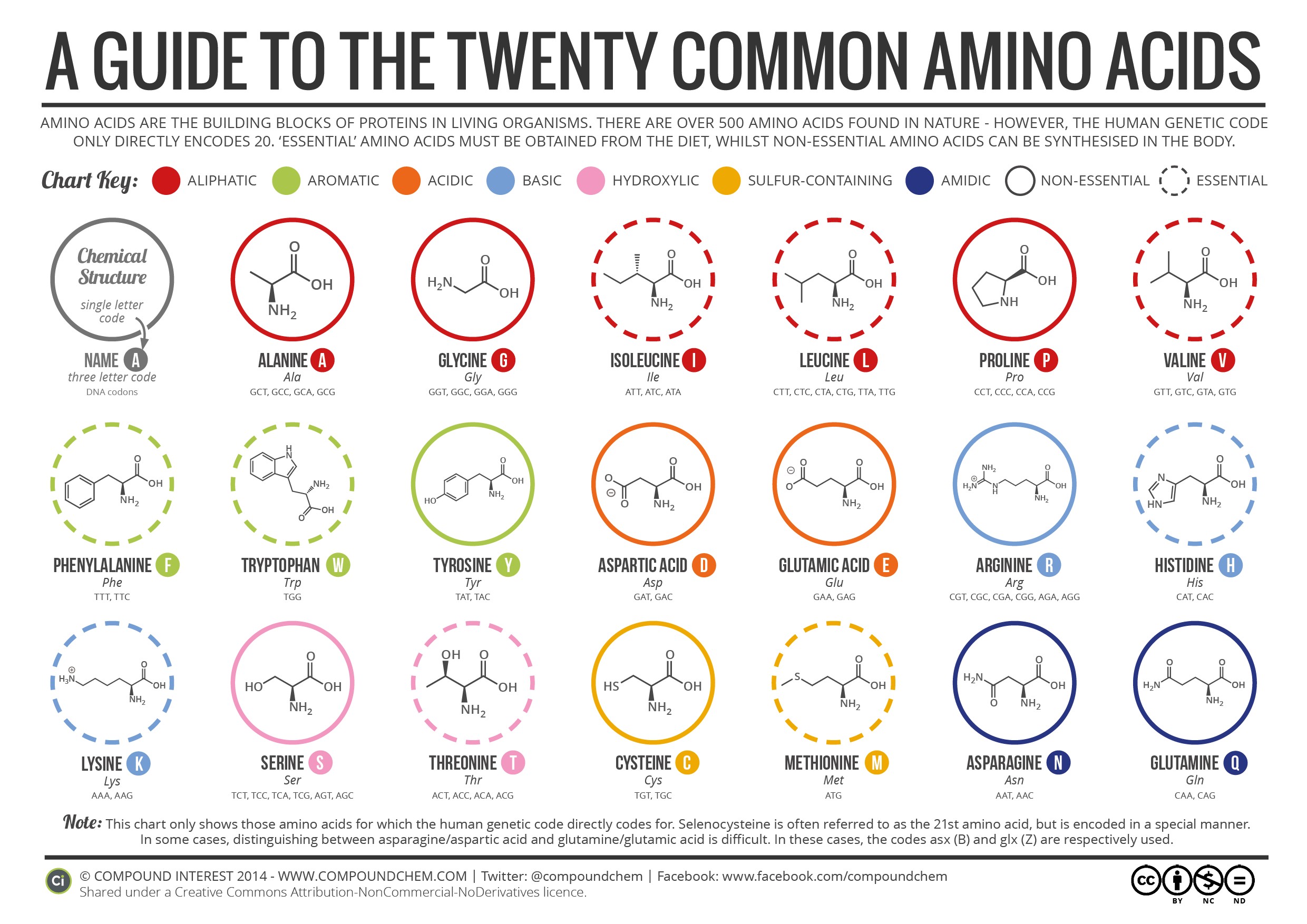Amino acids are the fundamental building blocks of proteins, essential for virtually all life processes. While hundreds of amino acids exist in nature, only 20 are directly encoded by the human genetic code. These 20 common amino acids are the workhorses of protein synthesis, combining in diverse sequences to create the vast array of proteins that make up our bodies. Understanding these amino acids is crucial for anyone interested in biochemistry, nutrition, and overall health.
The 20 common amino acids are categorized as either essential or non-essential. This classification is based on the human body’s ability to synthesize them. Non-essential amino acids can be produced by the body, while essential amino acids must be obtained through dietary sources.
Essential vs. Non-Essential Amino Acids: A Detailed Breakdown
Essential Amino Acids
These nine amino acids cannot be synthesized by the human body and must be obtained through diet. A deficiency in one or more essential amino acids can hinder protein synthesis and negatively impact health. The nine essential amino acids are:
- Histidine (His, H): Involved in the production of histamine, a neurotransmitter crucial for immune response, digestion, and sexual function.
- Isoleucine (Ile, I): A branched-chain amino acid (BCAA) vital for muscle metabolism, immune function, and hemoglobin production.
- Leucine (Leu, L): Another BCAA that plays a key role in protein synthesis, wound healing, and blood sugar regulation.
- Lysine (Lys, K): Important for calcium absorption, collagen formation, and hormone and enzyme production.
- Methionine (Met, M): Contains sulfur and is involved in metabolism, detoxification, and the absorption of selenium and zinc.
- Phenylalanine (Phe, F): A precursor to tyrosine, dopamine, epinephrine, and norepinephrine, all crucial neurotransmitters.
- Threonine (Thr, T): Important for immune function, fat metabolism, and the formation of collagen and elastin.
- Tryptophan (Trp, W): A precursor to serotonin and melatonin, which regulate mood, sleep, and appetite.
- Valine (Val, V): The final BCAA, essential for muscle coordination, tissue repair, and energy production.
Non-Essential Amino Acids
The human body can synthesize these eleven amino acids. While not required in the diet under normal circumstances, they are still vital for various bodily functions. The non-essential amino acids are:
- Alanine (Ala, A): Involved in glucose metabolism and energy production.
- Arginine (Arg, R): Plays a role in cell division, wound healing, and immune function. It can also be considered conditionally essential.
- Asparagine (Asn, N): Important for brain development and function.
- Aspartic Acid (Asp, D): Involved in the synthesis of other amino acids and neurotransmitters.
- Cysteine (Cys, C): Contains sulfur and is important for the structure of proteins and enzymes. Also conditionally essential.
- Glutamic Acid (Glu, E): A neurotransmitter involved in learning and memory.
- Glutamine (Gln, Q): The most abundant amino acid in the body, involved in immune function, gut health, and muscle building. Can also be conditionally essential.
- Glycine (Gly, G): Important for collagen synthesis, neurotransmitter function, and detoxification. Also conditionally essential.
- Proline (Pro, P): Contributes to the stability of collagen and other proteins. Also conditionally essential.
- Serine (Ser, S): Involved in the metabolism of fats and fatty acids, muscle growth, and the immune system.
- Tyrosine (Tyr, Y): A precursor to dopamine, epinephrine, norepinephrine, and thyroid hormones. Also conditionally essential.
Illustration of the chemical structures of the 20 common amino acids, including their three-letter and one-letter abbreviations.
The Importance of Dietary Protein for Amino Acid Intake
Since the body cannot store amino acids in the same way it stores fats and carbohydrates, a consistent intake of protein is crucial, particularly for obtaining the essential amino acids. Dietary protein is broken down into individual amino acids, which are then used to synthesize new proteins within the body.
A diet deficient in protein can lead to a shortage of essential amino acids, hindering protein synthesis and resulting in various health problems. These problems can include muscle loss, weakened immune function, hormonal imbalances, and impaired cognitive function.
Amino Acid Codes and Protein Structure
Proteins are large molecules composed of long chains of amino acids. To simplify the representation of these complex structures, scientists use shorthand codes. Each amino acid is represented by both a three-letter code (e.g., Ala for Alanine) and a single-letter code (e.g., A for Alanine).
These codes are particularly useful when describing the amino acid sequence of a protein, allowing researchers to easily communicate and analyze protein structures. Dr. Margaret Oakley Dayhoff, a pioneer in bioinformatics, played a significant role in developing the single-letter codes to reduce file sizes when describing protein sequences using early computers.
Beyond the 20: Selenocysteine and Pyrrolysine
While the human genetic code primarily encodes for 20 amino acids, there are exceptions. Selenocysteine is an amino acid found in a small number of human proteins. Unlike the 20 common amino acids, it is not directly coded for but is incorporated through a special mechanism. Pyrrolysine is another amino acid coded for in a similar manner and considered the 22nd amino acid, though its presence is less common in humans.
Conclusion: The Crucial Role of Amino Acids in Human Health
The 20 common amino acids are the fundamental building blocks of life, essential for protein synthesis, various metabolic processes, and overall health. Understanding the difference between essential and non-essential amino acids and ensuring adequate protein intake is vital for maintaining optimal bodily function. While selenocysteine and pyrrolysine add complexity to the field, the core understanding of the 20 common amino acids remains foundational for anyone interested in biochemistry, nutrition, and human health. By making informed dietary choices and understanding the roles of these crucial molecules, individuals can support their health and well-being.
